- Benefits of Growing Lilac in Your Garden
- 1. Fragrance
- 2. Attracting Pollinators
- 3. Ornamental Value
- 4. Low Maintenance
- 5. Long Blooming Period
- 6. Cut Flower Potential
- 7. Medicinal Properties
- Choosing the Right Lilac Variety
- 1. Flower Color
- 2. Fragrance
- 3. Bloom Time
- 4. Size
- 5. Disease Resistance
- 6. Growing Conditions
- Planting Lilac in Your Garden
- 1. Choose the Right Location
- 2. Soil Preparation
- 3. Digging the Hole
- 4. Planting the Lilac
- 5. Watering
- 6. Mulching
- 7. Pruning
- 8. Maintenance
- Care and Maintenance of Lilac Plants
- Watering
- Fertilization
- Pruning
- Deadheading
- Pest and Disease Control
- Protection from Winter Cold
- Regular Inspections
- Pruning Lilac for Better Blooming
- Introduction
- Why Prune Lilac?
- When to Prune Lilac?
- How to Prune Lilac?
- Pruning Tips for Lilac
- Conclusion
- Common Problems and Pests of Lilac Plants
- Fungal Diseases
- Pests
- Other Problems
- References
- Enjoying the Beauty and Fragrance of Lilac Flowers
- Planting Lilac Bushes
- Arranging Lilac Bouquets
- Creating a Lilac Garden
- Enjoying the Fragrance Indoors
- Questions and Answers:
- What are the different types and varieties of lilac?
- When is the best time to plant lilac in the garden?
- How deep should I plant a lilac bush?
- How often should I water a lilac bush?
- Can lilac be grown in containers or pots?
- How do I prune a lilac bush?
- What are some common pests and diseases that affect lilacs?
- Videos: Lilac Planting… Plus Tips!
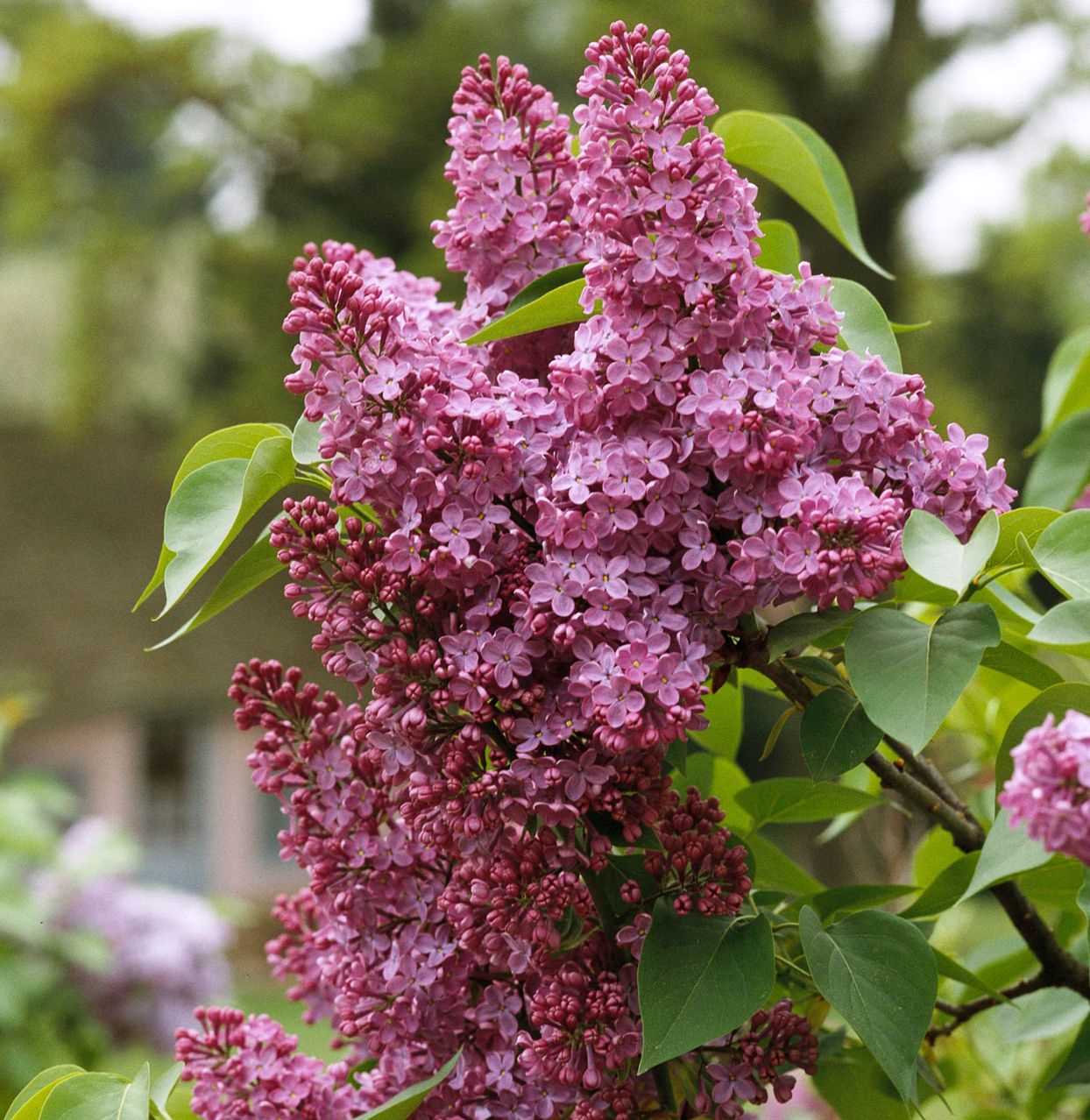
Lilacs are beloved plants in many gardens, with their beautiful, fragrant flowers and attractive foliage. They are a staple in traditional gardens and add a touch of romance and charm to any landscape. If you are considering planting lilacs in your garden or want to learn more about caring for these lovely plants, this complete guide will provide you with all the information you need.
Planting lilacs requires some careful consideration to ensure their proper growth and development. These deciduous shrubs thrive in well-drained soil and prefer full sun to partial shade. It is important to choose a suitable location for your lilacs, as they can reach a height and spread of up to 15 feet. They should be planted away from other large plants or structures to allow for adequate air circulation.
There are various types and varieties of lilacs to choose from, each with its own unique characteristics. Common lilac (Syringa vulgaris) is the most well-known and traditional variety, with its large, fragrant flowers in shades of purple, pink, and white. Other popular types include the French lilac (Syringa vulgaris “Mme Lemoine”) with its double white flowers, and the Persian lilac (Syringa x persica) with its delicate pale purple flowers.
Caring for lilacs involves regular pruning to maintain their shape and encourage flowering. It is best to prune lilacs immediately after they finish blooming to avoid cutting off next year’s flower buds. Lilacs also benefit from a yearly application of fertilizer in early spring and regular watering during dry periods.
With their stunning flowers and delightful fragrance, lilacs are a wonderful addition to any garden. By following the proper planting and care techniques outlined in this guide, you can enjoy the beauty and charm of lilacs in your own backyard.
Benefits of Growing Lilac in Your Garden
Lilacs are a popular choice for gardeners due to their many benefits. Here are some reasons why you should consider growing lilacs in your garden:
1. Fragrance
Lilacs are known for their delightful fragrance. The sweet, floral scent of lilacs can fill your garden and nearby areas, creating a pleasant and inviting atmosphere. The scent of lilacs is often associated with nostalgia and can bring back childhood memories.
2. Attracting Pollinators
Lilacs are highly attractive to pollinators such as bees and butterflies. The colorful flowers and sweet fragrance of lilacs act as magnets for these beneficial insects. By planting lilacs in your garden, you can help support the local pollinator population and promote a healthy ecosystem.
3. Ornamental Value
Lilacs are stunning ornamental plants that can enhance the beauty of any garden. Their clusters of vibrant, fragrant flowers in various shades of purple, pink, and white can add a touch of elegance and charm to your landscape. They can be used as focal points, hedges, or planted in groups to create stunning visual displays.
4. Low Maintenance
Once established, lilacs are relatively low maintenance plants. They are tolerant of various soil types and can withstand dry conditions. Lilacs generally require minimal pruning, making them an easy choice for busy gardeners. With just a little care, you can enjoy their beauty and fragrance for years to come.
5. Long Blooming Period
Lilacs have a relatively long blooming period, usually lasting for several weeks in spring. This extended blooming time allows you to enjoy their beautiful flowers for a longer duration. Additionally, lilacs can be pruned to encourage reblooming, extending their blooming season even further.
6. Cut Flower Potential
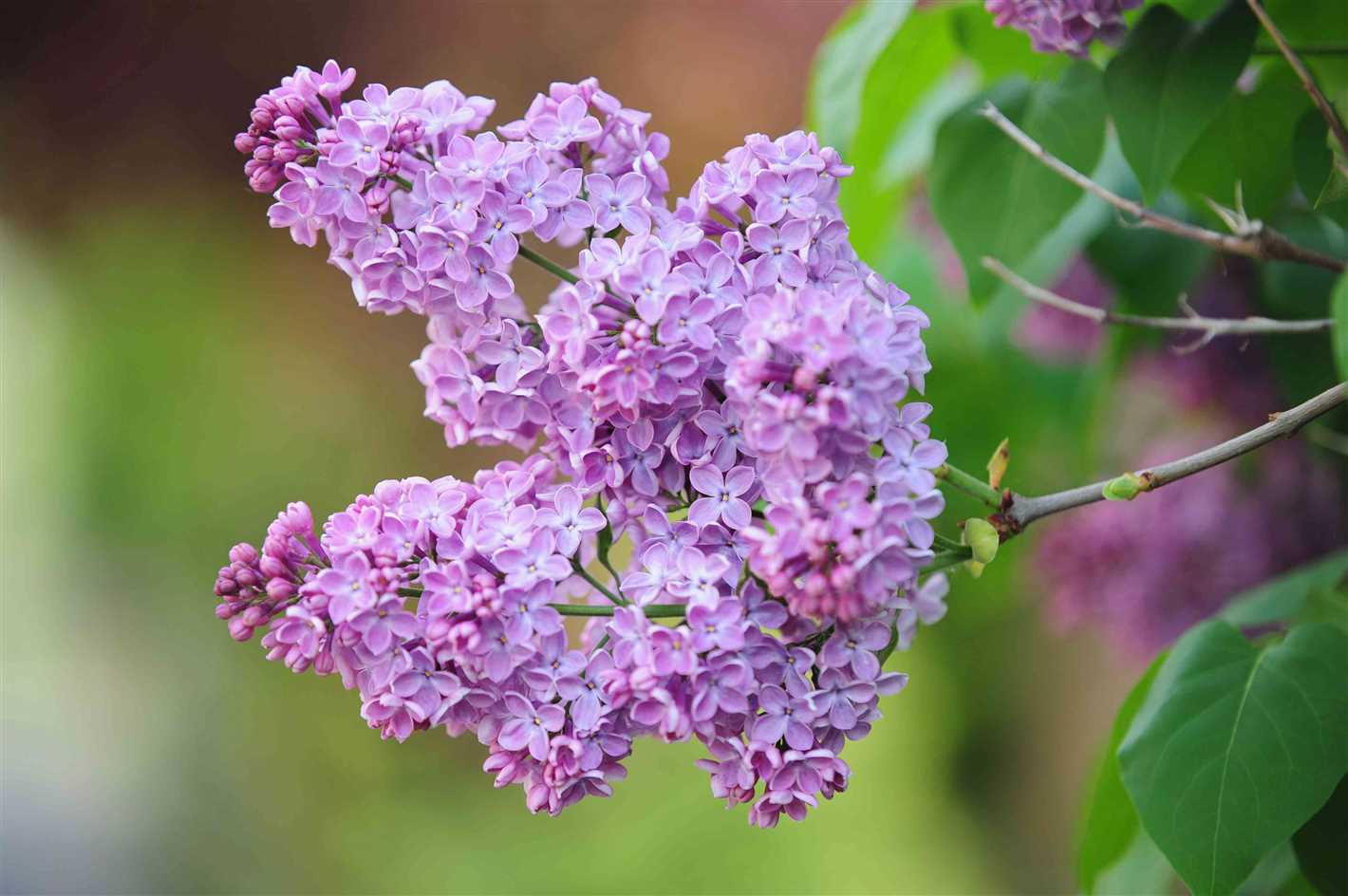

The gorgeous blooms of lilacs make them an excellent choice for cut flowers. Lilac bouquets can brighten up your home and fill it with their delightful fragrance. Placing lilacs in a vase can also add a touch of elegance to any special occasion or event.
7. Medicinal Properties
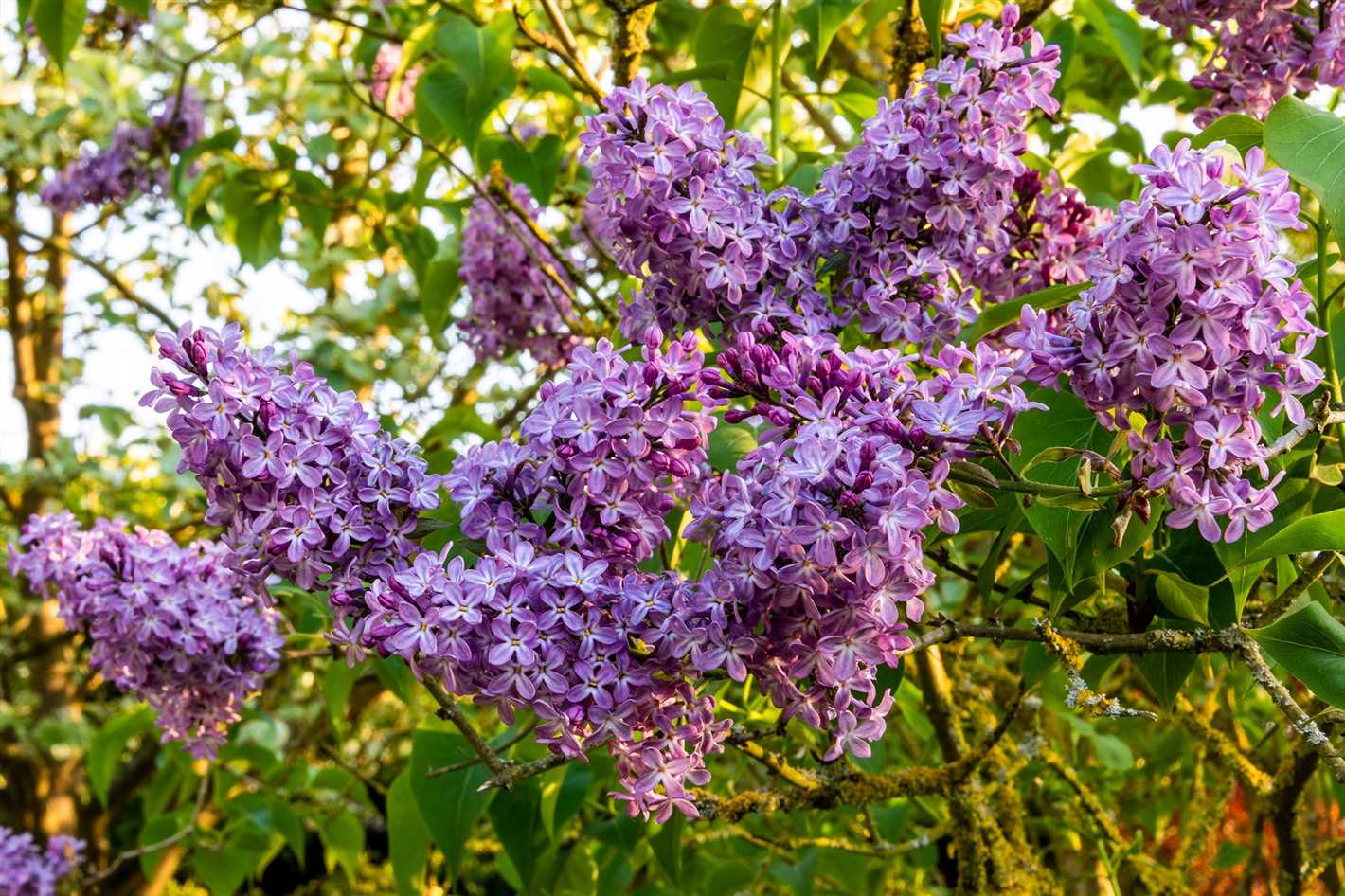

In traditional medicine, lilacs have been used for their various medicinal properties. Lilac extracts have antimicrobial, antioxidant, and anti-inflammatory properties. They have been used to treat skin conditions, fever, and respiratory issues. While more research is needed, some people believe that lilacs may have potential health benefits.
With their fragrance, beauty, and overall appeal, lilacs are a wonderful addition to any garden. Whether you are looking to attract pollinators, add color to your landscape, or simply enjoy their delightful scent, growing lilacs can bring joy and beauty to your outdoor space.
Choosing the Right Lilac Variety
When choosing a lilac variety for your garden, there are several factors to consider. Different varieties of lilacs have different characteristics, including flower color, fragrance, bloom time, and size. Here are some tips to help you choose the right lilac variety for your garden:
1. Flower Color
- The most common lilac color is purple, but there are also varieties with white, pink, lavender, and even yellow flowers.
- Consider the color scheme of your garden and choose a lilac variety that complements it.
2. Fragrance
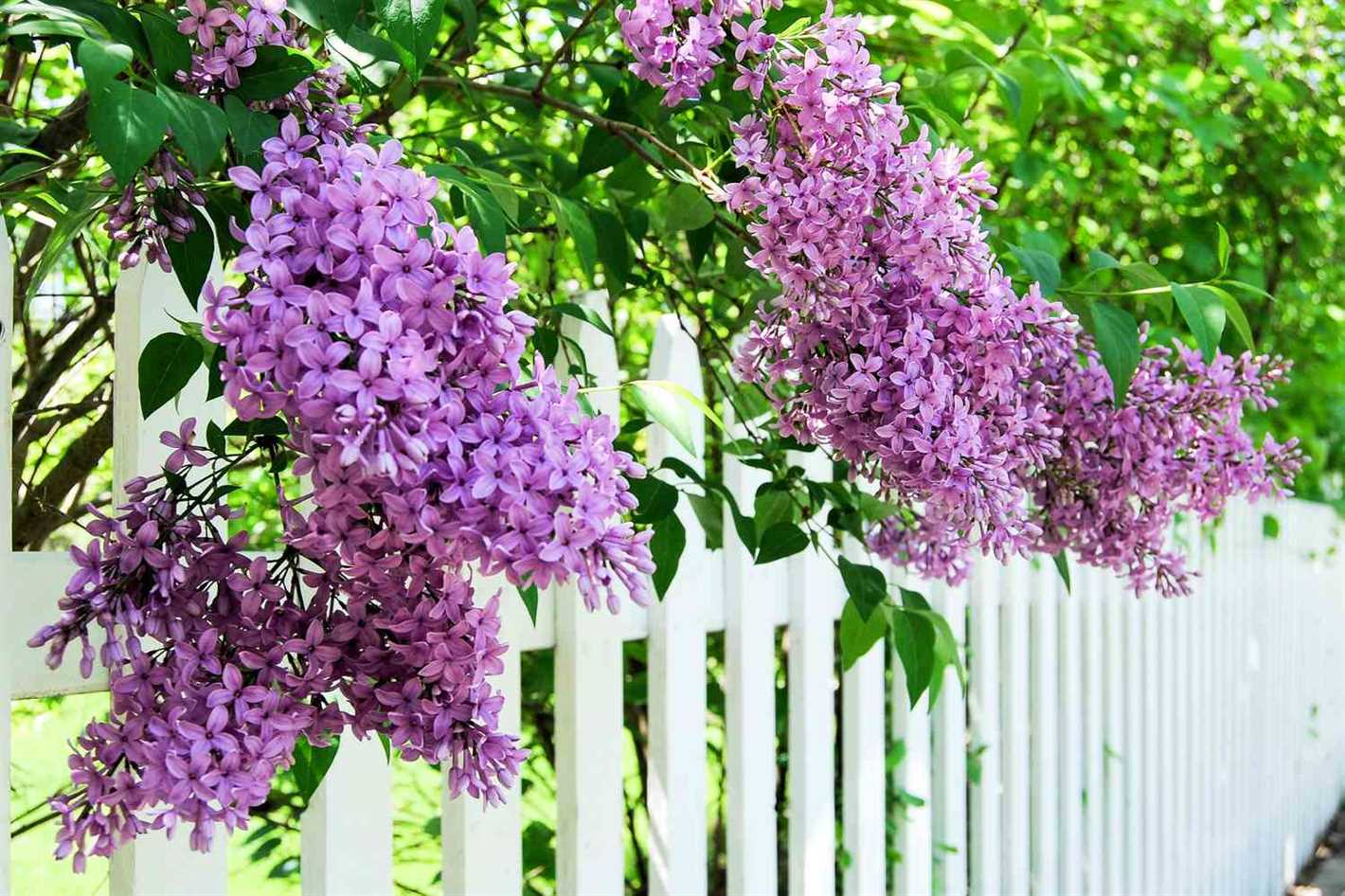

- Lilacs are known for their intoxicating fragrance, which can vary between varieties.
- Visit a local nursery or garden center to smell different lilac varieties and choose the one with the fragrance that appeals to you the most.
3. Bloom Time
- Lilacs have a relatively short bloom time, typically lasting for a couple of weeks in spring.
- Choose a combination of early, mid, and late-blooming varieties for continuous lilac blooms throughout the season.
4. Size
- Lilacs come in various sizes, from compact shrubs to large trees.
- Consider the available space in your garden and choose a lilac variety that fits well without overcrowding other plants.
5. Disease Resistance
- Some lilac varieties are more resistant to common diseases like powdery mildew and lilac blight.
- If these diseases are prevalent in your area, choose a disease-resistant lilac variety to ensure the health and longevity of your plants.
6. Growing Conditions
- Consider the specific growing conditions in your garden, such as sunlight exposure, soil type, and moisture levels.
- Choose a lilac variety that is well-suited to thrive in your particular growing conditions.
By considering these factors and doing a little research, you can choose the right lilac variety that will thrive and bring beauty to your garden for many years to come.
Planting Lilac in Your Garden


Planting lilac in your garden can add beautiful color and fragrance to your outdoor space. Here are some important steps to follow when planting lilac:
1. Choose the Right Location
Find a sunny spot in your garden that receives at least 6 hours of direct sunlight per day. Lilacs thrive in full sun and need adequate light to produce abundant blooms.
2. Soil Preparation
Lilacs prefer well-draining soil with a pH level between 6.5 and 7.5. Prepare the soil by removing any weeds or grass and loosening it with a garden fork or tiller. If the soil is heavy or clay-like, add organic compost or well-decomposed manure to improve drainage and fertility.
3. Digging the Hole
Dig a hole that is twice as wide and deep as the lilac’s root ball. This will provide enough space for the roots to spread out. Place the removed soil on a tarp or in a wheelbarrow for later use.
4. Planting the Lilac
Place the lilac in the center of the hole, making sure that the top of the root ball is level with or slightly above the ground. Backfill the hole with the soil you removed, firming it gently around the roots as you go. Avoid packing the soil too tightly.
5. Watering
Water the newly planted lilac thoroughly, making sure the soil is evenly moist. Afterward, water regularly and deeply, especially during dry spells, but avoid overwatering as it can lead to root rot.
6. Mulching
Apply a layer of organic mulch around the base of the lilac, leaving a gap around the stem to prevent rot. Mulch helps to conserve moisture, suppress weeds, and regulate soil temperature.
7. Pruning
Prune your lilac immediately after flowering to shape and tidy the plant. Remove any dead, damaged, or diseased branches, as well as any suckers that emerge from the base. Avoid heavy pruning, as lilacs bloom on old wood.
8. Maintenance
Regularly check for pests and diseases, such as aphids or powdery mildew, and take necessary steps to control them. Keep the area around the lilac clean and free of debris to prevent the spread of diseases.
By following these steps, you can successfully plant and care for lilac in your garden, enjoying its beautiful blooms and delightful fragrance for years to come.
Care and Maintenance of Lilac Plants
Once you have planted your lilac bushes, it is important to provide them with proper care and maintenance to ensure their health and longevity. Here are some essential guidelines to follow:
Watering
Lilac plants require regular watering, especially during dry periods. Water deeply at the root zone rather than spraying the foliage. Avoid overwatering, as this can lead to root rot. A layer of mulch around the base of the plant can help retain moisture.
Fertilization
Apply a balanced fertilizer in early spring before new growth appears. Use a slow-release granular fertilizer specifically formulated for flowering shrubs. Follow the package instructions for the appropriate amount and method of application.
Pruning
Pruning is an important part of lilac plant care. It helps maintain the shape of the plant and promotes flowering. Prune your lilac bushes immediately after blooming, as they set flower buds for the following year soon after. Remove any dead, damaged, or diseased branches. Also, thin out overcrowded branches to allow for better air circulation.
Deadheading
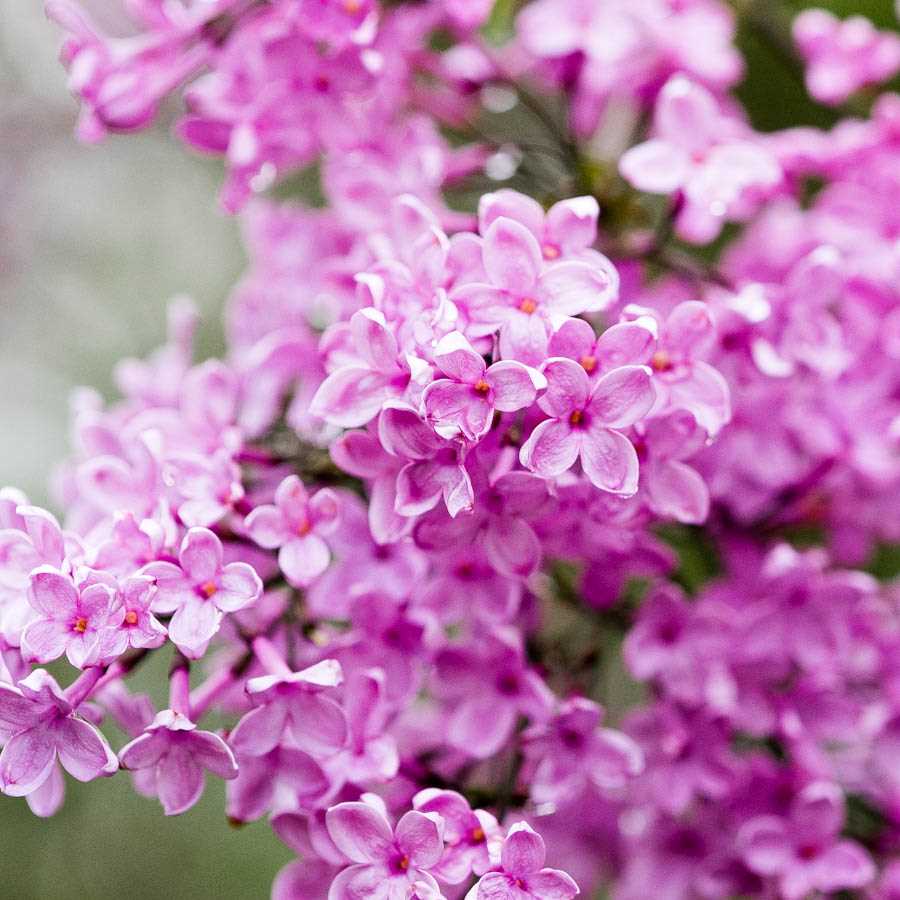

To encourage more blooms, it is recommended to deadhead spent flowers on lilac plants. Remove the faded flower clusters by cutting them back to a set of leaves or a side shoot. This will prevent the plant from putting energy into producing seeds and instead encourage new growth and more flowers.
Pest and Disease Control
Lilac plants are generally hardy and resistant to pests and diseases. However, they can sometimes be affected by common garden pests such as aphids or powdery mildew. Regularly inspect your plants for any signs of infestation or disease and take appropriate measures to control them. In some cases, using insecticidal soap or a fungicide may be necessary.
Protection from Winter Cold
In colder climates, lilac plants may require protection from harsh winter conditions. Apply a layer of mulch around the base of the plant to insulate the roots and help retain moisture. Consider wrapping the branches with burlap to protect them from drying winds and extreme cold temperatures.
Regular Inspections
Regularly inspect your lilac plants for any signs of stress, disease, or nutrient deficiencies. Check for wilting leaves, yellowing foliage, or abnormal growth. Early detection of problems can help prevent them from spreading to other plants and allow for prompt treatment.
By providing proper care and maintenance, you can enjoy the beautiful blooms and fragrance of lilac plants in your garden for many years to come.
Pruning Lilac for Better Blooming
Introduction
Pruning is an essential task for maintaining the health and appearance of lilac plants. Proper pruning techniques can help promote better blooming and ensure the longevity of the plant. In this section, we will discuss the importance of pruning lilac, when and how to prune, and some important tips to keep in mind.
Why Prune Lilac?
Pruning lilac is necessary to remove dead or damaged branches, improve air circulation, promote new growth, and maintain the desired shape of the plant. It helps in preventing diseases and encourages the plant to produce more blooms.
When to Prune Lilac?
Lilacs should be pruned immediately after flowering. This is usually in late spring or early summer. Pruning at this time allows sufficient time for new growth to develop and flower buds to form for the following year.
How to Prune Lilac?


Here are the steps to prune lilac:
- Remove dead or damaged branches: Start by cutting any dead or damaged branches at their base. This will help improve the overall health of the plant.
- Thin out the plant: Remove any overcrowded or crossing branches to improve air circulation and reduce the risk of diseases.
- Promote new growth: Cut about one-third of the oldest branches at the base to encourage the growth of new shoots and blooms. This should be done every 2-3 years.
- Maintain the desired shape: Trim the remaining branches to shape the plant as desired. Lilacs can be pruned into a rounded or vase shape.
Pruning Tips for Lilac
- Use sharp and clean pruning tools to make clean cuts and minimize the risk of infection.
- Remove any suckers or shoots that emerge from the base of the plant, as they can take energy away from the main plant.
- Remove spent blooms to prevent the formation of seed pods and to redirect the energy towards new growth and bloom production.
- Apply a thin layer of mulch around the base of the plant after pruning to help retain moisture and suppress weed growth.
Conclusion
Pruning lilac is an important task that helps promote better blooming and overall plant health. By following the proper pruning techniques and tips mentioned in this article, you can maintain a healthy and beautiful lilac plant in your garden.
Common Problems and Pests of Lilac Plants
Fungal Diseases
Powdery mildew: One common fungal disease that affects lilac plants is powdery mildew. It appears as a white, powdery substance on the leaves, stems, and flowers. To prevent this disease, make sure your lilac plants have adequate air circulation and sunlight. If powdery mildew does occur, you can treat it with fungicides specifically designed for powdery mildew.
Leaf spots: Lilac plants can also be prone to various leaf spot diseases caused by fungi. Leaf spots appear as discolored spots or lesions on the leaves. To prevent leaf spots, avoid wetting the leaves when watering and ensure good air circulation. If leaf spots do occur, remove and destroy infected leaves and ensure proper sanitation to prevent the spread of the disease.
Pests
Aphids: Aphids are small insects that suck the sap from the leaves and stems of lilac plants. They can cause curling leaves, stunted growth, and a sticky residue called honeydew. To control aphids, you can wash them off the plant with a strong stream of water or use insecticidal soap or neem oil.
Lilac borer: The lilac borer is a type of moth larva that feeds on lilac plants, causing damage to the stems and branches. Signs of lilac borer infestation include wilting or dying branches and sawdust-like frass near the base of the plant. To control lilac borers, prune and destroy infested branches and apply insecticides labeled for borer control.
Scale insects: Scale insects are small, immobile pests that feed on the leaves and stems of lilac plants. They can cause yellowing leaves, stunted growth, and a sticky residue. To control scale insects, you can scrape them off the plant or use insecticidal soap or horticultural oil.
Other Problems


Improper pruning: Improper pruning can lead to a variety of problems for lilac plants, including reduced blooming, weak growth, and disease susceptibility. Be sure to prune lilac plants correctly, removing dead or damaged branches and shaping the plant to maintain its natural form.
Environmental stress: Lilac plants can be sensitive to environmental stressors such as drought, excessive heat, and poor soil conditions. To keep your lilac plants healthy, provide them with adequate water, plant them in well-draining soil, and ensure they have appropriate sunlight exposure.
References
- University of Minnesota Extension: Pests of Lilacs
- Michigan State University Extension: Common Lilac Diseases
- Michigan State University Extension: Common Lilac Insect Pests
Enjoying the Beauty and Fragrance of Lilac Flowers
Lilac flowers are known for their beautiful colors and enchanting fragrance. They add a touch of elegance and sophistication to any garden or outdoor space. Here are a few ways you can enjoy the beauty and fragrance of lilac flowers:
Planting Lilac Bushes
If you want to have lilac flowers in your garden, consider planting lilac bushes. Choose a sunny location with well-drained soil for optimal growth. Dig a hole twice as wide and deep as the root ball of the plant. Place the lilac bush in the hole, making sure the top of the root ball is level with the ground. Backfill the hole with soil and water thoroughly. Lilac bushes usually bloom in late spring, so you can look forward to their vibrant flowers.
Arranging Lilac Bouquets
Lilac flowers make stunning cut flowers for bouquets. To create a lilac bouquet, cut the stems of the flowers at a 45-degree angle and place them in a vase filled with water. Remove any leaves that will be below the water line to prevent bacteria growth. Arrange the lilac flowers in the vase in a way that allows their beauty and fragrance to shine. You can mix lilac flowers with other complementary blooms for a more diverse arrangement.
Creating a Lilac Garden
If you are a true lilac enthusiast, consider creating a dedicated lilac garden. Clear a section of your yard and prepare the soil by tilling and adding compost. Choose a variety of lilac bushes with different colors and fragrances to create a vibrant and diverse garden. Plant the lilac bushes at least 5 feet apart to allow for proper air circulation. Add mulch around the base of the plants to retain soil moisture and suppress weeds. With time, your lilac garden will become a fragrant oasis.
Enjoying the Fragrance Indoors
If you want to enjoy the fragrance of lilac flowers indoors, consider drying the flowers. Cut the lilac flowers when they are fully bloomed and remove any leaves. Tie the stems together with string and hang them upside down in a cool, dry place. After a few weeks, the flowers will be dried and ready to be used. You can create potpourri or sachets with the dried lilac flowers and place them in your home to enjoy the sweet fragrance year-round.
Overall, lilac flowers are a beautiful addition to any garden or home. Their vibrant colors and intoxicating fragrance make them a favorite among gardeners and flower enthusiasts. Whether you choose to plant lilac bushes, arrange bouquets, create a garden, or enjoy the fragrance indoors, the beauty and fragrance of lilac flowers are sure to bring joy and tranquility to your life.
Questions and Answers:
What are the different types and varieties of lilac?
There are several different types and varieties of lilac, including common lilac (Syringa vulgaris), Persian lilac (Syringa x persica), Japanese lilac (Syringa reticulata), and dwarf Korean lilac (Syringa meyeri). Within these types, there are also numerous varieties with different flower colors and sizes.
When is the best time to plant lilac in the garden?
The best time to plant lilac in the garden is in early spring or fall, when the weather is cool and the plant is dormant. This gives the lilac time to establish its roots before the hot summer weather arrives.
How deep should I plant a lilac bush?
A lilac bush should be planted at a depth that allows the bud union (the swollen area at the base of the plant) to be level with or slightly above the soil surface. The hole should be deep enough to accommodate the entire root system without bending or crowding the roots.
How often should I water a lilac bush?
A lilac bush should be watered deeply once a week, especially during dry periods or hot weather. The soil should be kept moist but not waterlogged. Mulching around the base of the plant can help to retain moisture in the soil.
Can lilac be grown in containers or pots?
Yes, lilac can be grown in containers or pots, but it is important to choose a dwarf variety that is more suitable for container gardening. The container should be large enough to accommodate the root system and provide good drainage. Regular watering and fertilizing are also necessary for the plant to thrive in a container.
How do I prune a lilac bush?
Pruning a lilac bush is best done immediately after it finishes blooming, typically in late spring or early summer. Remove any dead or damaged branches, as well as any suckers that emerge from the base of the plant. Thin out crowded branches to improve air circulation. Avoid heavy pruning, as it can reduce or delay flowering.
What are some common pests and diseases that affect lilacs?
Some common pests that affect lilacs include aphids, lilac borers, and scale insects. Diseases that can affect lilacs include powdery mildew, bacterial blight, and verticillium wilt. Proper care, such as regular watering and fertilizing, can help prevent pest and disease problems. Pruning out affected branches and treating with appropriate pesticides or fungicides may be necessary if an infestation occurs.







